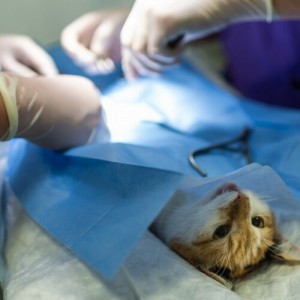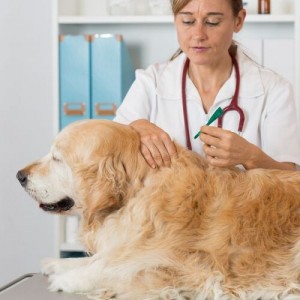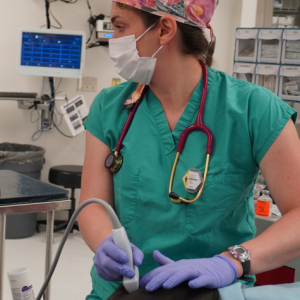Protecting backyard chickens from avian influenza
by Jenny Alonge
In December 2021, the Eurasian strain of highly pathogenic avian influenza (HPAI) H5N1 was detected in Newfoundland and Labrador, Canada. Since then, the virus has been confirmed in wild birds, commercial poultry facilities, and backyard flocks in Canada and the United States. As of March 8, 2023, avian outbreaks affecting poultry had involved 58,602,281 cases and occurred in 47 U.S. states. Owners of backyard poultry flocks are understandably concerned about this highly pathogenic, dangerous virus. The following article provides details to relay to your clients to help protect their birds from the disease.
Practice good biosecurity
Practicing good biosecurity not only reduces the risk of people, animals, equipment, and vehicles from spreading disease, but also helps protect your flock and others in your community. Basic measures include:
- Minimize visitors — Allow only people who care for your flock to contact your birds and ensure they practice good biosecurity principles. Keep track of everyone who enters your property.
- Wash your hands — Wash your hands before and after handling poultry, which helps prevent disease spread from bird to bird and protects you from dangerous pathogens, such as salmonella. Washing with soap and water is preferred, but if you use a hand sanitizer, always remove dirt, manure, and other materials, since disinfectants can’t penetrate organic material.
- Wear disposable boot covers — Ensure people entering your flock’s environment wear disposable gloves or use a disinfectant foot bath. Remove all organic material from your shoes with a brush before stepping in the disinfectant bath.
- Disinfect tools and equipment — Clean and disinfect all tools and equipment frequently.
- Avoid borrowed equipment — Don’t borrow equipment, tools, or poultry supplies from other bird owners.
Isolate your flock
Wild birds, such as migrating waterfowl, are a natural avian influenza reservoir, and vectors such as rodents and insects can also transmit the disease. Tips to protect your flock include:
- Enclose your flock in a secure area, and repair holes and weaknesses in the fence as necessary.
- Eliminate standing water and do not offer bird baths or wild bird feeders, so you do not attract wild birds. In addition, keep your chicken feeders and water in an enclosed area inaccessible to wild birds.
- Never bring birds into your flock from another property. Add only day-old chicks obtained from a National Poultry Improvement Plan (NPIP) certified hatchery to your flock.
- Quarantine new birds for at least 30 days.
- Don’t expose your birds to poultry swaps, poultry shows, livestock auctions, or fairs.
- Control rodents and insects in your chicken yard.
Keep your flock healthy
Healthy birds are more disease-resistant. Tips to maintain optimal flock health include:
- Water — Birds should have continuous access to clean, fresh water.
- Nutrition — Provide a nutritional diet for the chickens’ life stage. Complete, well-balanced chicken feeds are commercially available for every life stage and this should be used as the chickens’ main food source, following the labeled directions. Also, limit treats, such as mealworms or chicken scratch, to less than 10% of the total calories.
- Hygiene — Clean water and food containers at least twice a week to prevent bacterial accumulation.
- Avoid toxins — Avoid foods such as avocados, dried beans, uncooked potatoes, tomato plants, onions, rhubarb, stone fruit pits, and salty foods, which are toxic to chickens.
- First aid — Know basic first aid to address common wounds and injuries.
- Veterinary care — Establish a relationship with a local veterinarian who is experienced in poultry medicine, so you know who to contact if your flock needs veterinary care.
Recognize the signs
Avian influenza viral strains cause varying degrees of clinical illness in poultry. Low pathogenic avian influenza viruses cause mild disease, but HPAI is extremely infectious and often fatal, typically killing 95% to 100% of the flock. Potential signs include:
- Sudden death without clinical signs
- Coughing
- Nasal discharge
- Watery or green diarrhea
- Swelling around the head and neck
- Lethargy
- Purple discoloration of wattles, combs and legs
- Decreased egg production
- Misshapen eggs
- Twisted neck
- More than 10% of the flock exhibiting illness
Report sick birds
If your flock exhibits avian influenza signs, you must report sick birds immediately. Reporting options include:
- Local veterinarian
- State veterinarian
- State veterinary diagnostic laboratory
- USDA’s Veterinary Services at 1-866-536-7593
Dead birds should be necropsied. Preserve the carcass by wrapping the bird in a leak-proof plastic bag that is placed inside a second leak-proof plastic bag, and then inside a third bag, and securing the package with tape. Refrigerate—don’t freeze—the carcass.
Avian influenza is a concerning disease, but practicing good biosecurity and keeping your birds isolated is the best way to control the virus and protect your flock.













List
Add
Please enter a comment